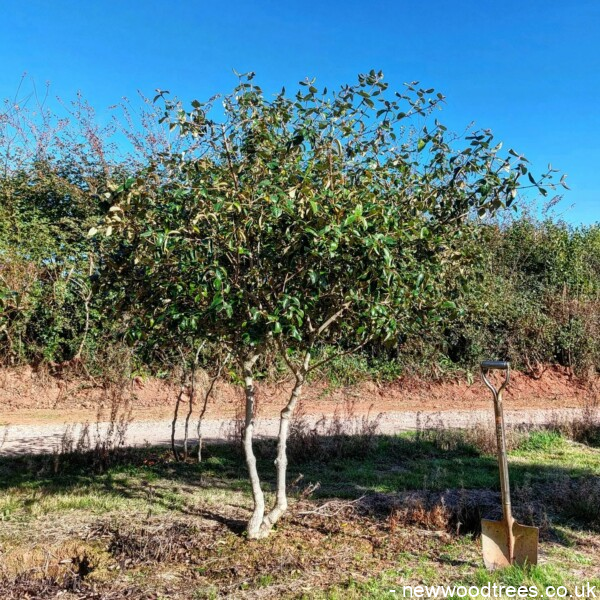Are you planning a landscaping project that requires an eye-catching focal point or plenty of shade? If so, consider introducing multi-stem trees into your outdoor space. Trees harbour many benefits, from converting sunlight into energy to providing animals and organisms with food and shelter.
But why choose a multi-stem tree in particular? Enhancing your property with multi-stem trees improves air quality, boosts property value, and creates aesthetic appeal. Multi-stem trees are ideal for making the most of a small plot since these trees flourish with a vast foliage canopy sprouting from multiple stems.
A multi-stem can be a head-turning element to a business premises, your family home, designated wildlife zones, or the gardens surrounding landmarks, such as statues, monuments, or memorial plaques.
Expect instant architectural beauty when introducing multi-stem trees, guaranteeing a more significant presence for less investment and effort than standard tree types.
What are the Characteristics and Uses of Multi-Stem Trees?
Trees that thrive with more than one stem from the main root are called “multi-stem trees.” Proper pruning methods during the tree’s initial sprouting make it possible to develop a vast array of stems, thus resulting in remarkable leaf development and thicker canopies.
Multi-stem trees are structurally open, allowing for observational pleasure from numerous angles. Typically, multi-stem trees begin producing branches on the trunk’s lower section. Compared with shrubs, the branches are usually positioned higher up the bole.
They are suitable for use as barricades or for separating specific garden zones, e.g., distinguishing an area for crop cultivation from a place where wildlife roams.
How to Choose a Planting Site for Multi-Stem Trees

Every gardener has a different vision, so the choice of planting site may vary significantly from one person to another. Some essential factors can help you accomplish the best results, including sunlight exposure, environment, hardiness and water source.
Keep evergreen trees from the house, as they tend to grow tremendously. Aim for 15-20 feet of distance from electricity lines or properties. It’s also essential to consider your soil’s pH (acidity) level and depth. Test the soil to ensure no obstructions hinder root growth below the surface.
Recommended Multi-Stem Trees for Ornamental Purposes
A garden with multi-stem trees is sure to be vibrant. Unlike branched and clear-stem trees, an individual multi-stem tree can occupy a greater land area and add more natural splendour. Best of all, there is a profusion of beautiful multi-stem trees to choose from.
Here are a few that we recommend for ornamental purposes, shading, and cooling:
This pollution-resistant multi-stem offers a cosy home for aphids, caterpillars, and other small insects. Plant it for an instant dollop of colour in autumn. With its broad leaf display, light brown bark, and slender twigs that produce tiny silvery leaf buds, the Field Maple is a true beauty. Expect yours to live for as long as 350 years and, in the right conditions, grow up to a height of 20 metres.
- Betula albosinensis’ ‘Fascination’ (White Chinese Birch)
Fascinate passers-by with this eye-catching seasonal stunner, which the Royal Horticultural Society chose for an Award of Garden Merit. A birch species belonging to the Betulaceae family, this deciduous tree flourishes anywhere from 6-10 metres tall with a spread of 4 -5 metres wide.
Native to the western lands of China, the “Fascination” exposes cream-coloured fresh bark that gradually transforms into a deep shade of brown. Branches ascend stiffly, and the leaves vary from copper and orange to dark green.
- Clerodendrum trichotomum (Harlequin Glorybower)
This multi-stem tree sometimes goes by the name of “peanut butter tree” or “glory tree”. Growing to heights of 4 – 6 meters, the Harlequin Gloryblower is native to numerous countries across Asia, including China, Japan, Korea, the Philippines, and Taiwan.
Belonging to the Lamiaceae family, this flowering plant gets its nickname from the peanut scent it produces when the leaves are crushed. The leaves that embellish each stem’s protruding branches are typically ovate-shaped, measuring five inches, with a soft yet hairy texture.
- Elaeagnus umbellata (Autumn Olive)
Initially introduced to the UK during the early 19th Century, this popular ornamental shrub features greyish foliage, brightly coloured berries, and outstanding flowers that appeal to gardeners specialising in landscaping.
Aside from the aesthetic appeal, the Autumn Olive tree provides ample protection from the wind and a generous food source for various wildlife species, such as insects and bees that feed on its fruit.
- Heptacodium miconioides (Seven-sons Tree)
A close relative of the Honeysuckle tree, the Seven-sons Tree is a petal-laden small tree with an average height of 4 – 6 metres. Europeans first encountered this multi-stem in the early 20th century in China. Nowadays, its seeds are sown in many countries worldwide.
An exciting element of this tree is the rich red stems, which emerge after the delicate white flowers part ways with the tree. Flowers tend to blossom in the late summer and have a pleasantly sweet scent.
Add a touch of Japan to your British garden or landscaping project with the Japanese Privet. Renowned for proliferating and withstanding harsh winters, this unique tree features a dense canopy that grasps attention with its fragrant white flowers that bloom between spring and summer.
The evergreen shrub has dark green, shiny leaves that extend to 10 centimetres. The waxy texture of the leaves lends itself to the tree’s nickname – “wax-leaf privet”. Typically, these multi-stem trees are slow to grow and only reach a maximum height of 3.5 metres and span up to 2 metres wide.
- Osmanthus x burkwoodii (Burkwood Osmanthus)
If you are willing to wait a while for your tree to reach its full potential, it will be worth it with this species. The Burkwood Osmanthus is an evergreen shrub featuring deep green ovate-shaped leaves that measure 3 – 5 cm.
White, perfumed flowers blossom before dark blue fruits (drupes) arrive in autumn or late summer. The rounded slow-growing tree works well as a natural barricade, and its maximum height of 3 metres equals its typical width.
- Pinus densiflora’ Umbraculifera’ (Tanyosho Pine)
Another multi-stem evergreen tree worth adding to your garden is the Tanyosho Pine. Most growers anticipate their trees to reach 3 – 5 metres, but it’s possible to yield taller trees with proper pruning and nourishment.
Needles grow in double bundles, and the Tanyosho Pine’s branches stretch outwards like an umbrella. When the bark becomes dry, you can peel it or allow nature to work its magic and unveil a burnt orange trunk beneath.
This multi-stem is native to Southern China, Japan, and Korea. Belonging to the family Styracaceae, the Japanese Snowbell is a fabulous tree for autumn. It usually only grows up to 12 metres, with most trees spanning 8 metres across.
Pick the cream-coloured flowers, savour their subtle sweet scent, and admire the birds as they flock to the olive-like drupes that ripen in late spring to early summer. Delicate yet dense, this deciduous tree’s leaves often switch from green to orange or yellow in autumn.
During its prime blooming phase, the Japanese Snowbell’s crown is neat and round, while the branches extend horizontally to create a mesmerising display that mimics a snow-blanketed tree.
You might know this multi-stem tree as the “English Yew” or “Common Yew.” It originates from the rugged terrains of Europe, northern Africa, and southwestern Asia but flourishes beautifully in most climates with lots of light and partial shade.
On average, the Yew tree reaches 8 -18 metres in height and boasts a heavy spread that merges needle-thin dark green leaves with ornamental branches. The older the tree, the redder the bark will become. Yew trunks are usually very thick, and the female trees bear berry-like poisonous fruits (arils) that conceal a large green seed.
Initially grown in Europe (mainly in England’s Yorkshire), southwestern Asia, and northwest Africa, the Wayfaring Tree belongs to the Viburnum plant species. It grows to 3 metres, but some trees may climb further if you plant it in nutrient-rich soils and give it lots of tender loving care.
Favoured for its bouquets of white spring flowers, red-yellow berry clusters, and thick green leaves, Viburnum lantana features a rounded shrub that attracts an enchanting display of butterflies and birds throughout the seasons. It grows best in full sun to partial shade and is relatively drought-tolerant.
Conclusion
If you have never planted trees before, or are inexperienced with multi-stem varieties, consider seeking the help of a professional tree installation specialist. Trees of this kind can grow magnificently, and the surrounding area must be ample enough to support this. Inspect the root configuration beforehand to figure out the best planting process.
Consider the tree’s location if you’re planting multi-stem trees to create a wind block or sunblock. Other factors that may affect the strength and health of a multi-stem include soil and weather conditions, aftercare, and fertiliser use. Developing a seasonal tree care routine is also advisable.







